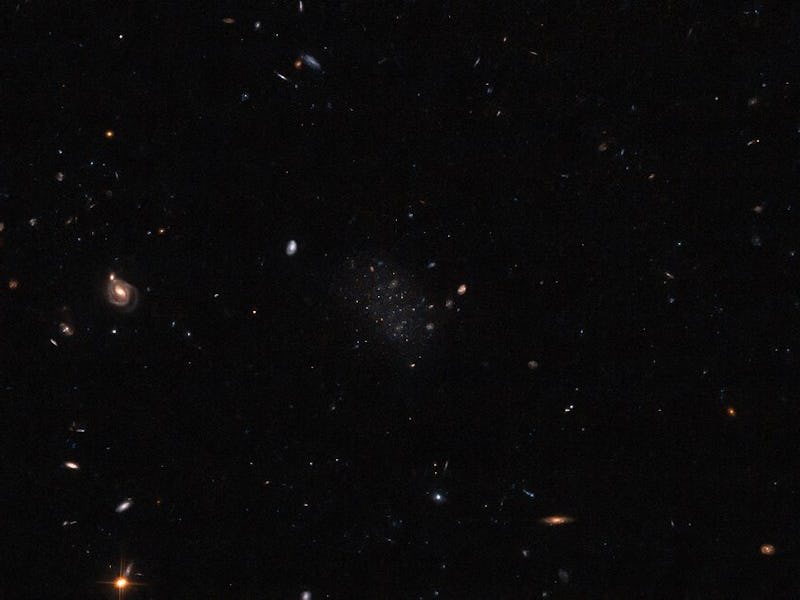Look! An Amateur Astronomer Just Found Three Dwarf Galaxies That a Computer Missed
Sometimes humans are better at astronomy than computers.

Amid a flurry of recent news about computer algorithms doing everything from nearly passing medical licensing exams to assisting therapists with their sessions, one astronomer just scored some points for his fellow humans.
Giuseppe Donatiello recently discovered three new (to science) dwarf galaxies in a massive set of data from a six-year survey of the sky. An algorithm designed to search the data for anything that looked like a galaxy had missed all three of the small, faint galaxies, but Donatiello — an amateur astronomer who decided to process a swath of the survey’s data for the fun of it — found them. All three galaxies are now named after him: Donatiello II, III, and IV.
What the astronomer found
All three newly-discovered dwarf galaxies orbit a much larger galaxy, the spiral galaxy NGC 253 (also known as the Sculptor Galaxy), 13 million light years away. Their relationship is very similar to the one between our own Milky Way and its duo of plucky cosmic sidekicks, the Large and Small Magellanic Clouds.
The cluster of faintly-glowing objects in the center of this image includes the three newly-discovered dwarf galaxies, Donatiello II, III, and IV.
The Sculptor Galaxy is bright and teeming with young, hot new stars and blazing bursts of star formation. But its smaller satellites, the three Galaxies Donatiello, are very faint. They would be hard to spot anyway, but it’s even harder to see them alongside the Sculptor’s brilliance. And that’s why the algorithm missed them; they were so faint that they didn’t stand out in the data enough for the algorithm to flag them as possible galaxies.
“Even the best algorithms have their limitations when it comes to distinguishing faint galaxies from individual stars and background noise,” says the European Space Agency in a recent announcement. “In these most challenging identification cases, discovery has to be done the old-fashioned way — by a dedicated human trawling through the data themselves.”
How galaxies can hide from a computer
The data which the three tiny galaxies were hiding in came from the Dark Energy Survey, which spent six years scanning the skies for supernovae, galaxy clusters, and other objects that astronomers can use to measure how quickly the universe is expanding. Since the survey ended in 2019, its specialized instrument — the Dark Energy Camera — has been used for other astronomical projects.
Meanwhile, Dartmouth College astronomer Burçin Mutlu-Pakdil and her team used the Hubble Space Telescope to take a closer look at several small, faint galaxies, one of which was Donatiello II. Mutlu-Pakdil and her team confirmed that the dwarf galaxies were actually caught in the gravitational pull of the Sculptor Galaxy.
Humans are still better at some things, but algorithms are also indispensable tools in astronomy for everything from sorting through data to modeling how physics works.